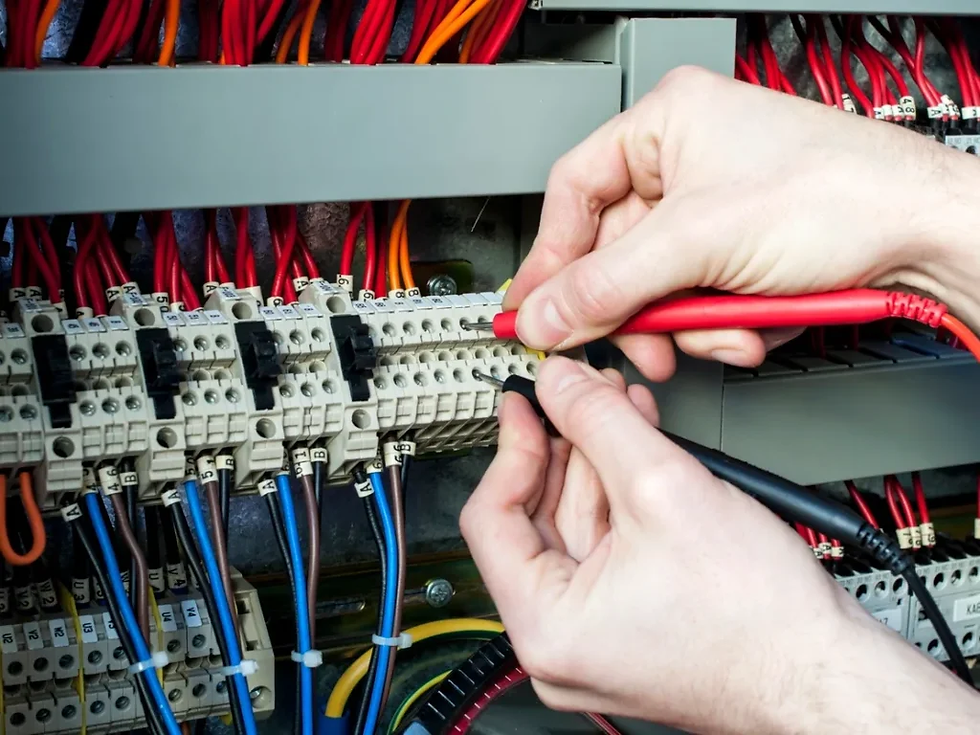Complete Guide to Electrical Fault Finding
- David Michell
- Jun 20
- 3 min read
Electricity powers nearly every modern convenience in your home, from lighting to appliances and heating. But when something goes wrong, it can be more than an inconvenience—it can pose serious safety risks. That’s why understanding the basics of electrical fault finding is essential for every homeowner. Whether it's flickering lights, tripping circuit breakers, or dead sockets, recognising when to call an emergency electrician can help protect your home and family.
In this guide, we’ll explain how fault finding works, common signs of electrical issues, and when to seek professional help from electrical services.
What is Electrical Fault Finding?
Fault finding is the process of diagnosing problems in an electrical system. It involves identifying faulty circuits, damaged components, or loose connections that cause issues such as power loss, short circuits, or electrical hazards. While some issues might be simple—like a tripped breaker—others can be hidden within the wiring or appliances, requiring the expertise of a qualified emergency electrician.
Common Electrical Faults in Homes
Homeowners may encounter a wide range of electrical issues. The most common faults include:
Frequent tripping of circuit breakers: This usually indicates an overloaded circuit or a short circuit.
Flickering or dimming lights: This could mean loose wiring or an issue with the circuit.
Buzzing noises from outlets or switches: Often a sign of loose connections or faulty components.
Burning smell near outlets or wiring: A serious red flag that should never be ignored.
Electric shocks when touching appliances: This could point to poor earthing or faulty wiring.
Ignoring these warning signs can increase the risk of fire or electrocution. If any of these symptoms occur, it’s time to contact a reliable emergency electrician for prompt inspection.
Why You Shouldn’t DIY Electrical Faults
It might be tempting to troubleshoot electrical issues yourself—especially with countless tutorials available online. However, electrical fault finding can be dangerous without proper training and tools. Tinkering with circuits can lead to electrocution, further damage to your system, or even void your home insurance.
Certified electricians are trained to handle fault finding using advanced tools and testing equipment. They follow strict safety regulations and provide peace of mind that the problem is fixed correctly and safely.
How Emergency Electricians Diagnose Electrical Faults
When you hire an emergency electrician, they will follow a systematic approach to diagnose the issue. This typically includes:
Initial inspection – They begin with a visual assessment of sockets, switches, and the consumer unit.
Testing circuits – Using specialised metres, they test for continuity, voltage levels, and insulation resistance.
Isolating the fault – By narrowing down the affected area, the electrician can isolate where the problem lies.
Repair or replacement – Depending on the findings, they will repair damaged wires, replace faulty components, or recommend further electrical services.
Emergency electricians are not just for total power loss. They also handle smaller but urgent electrical issues that could escalate if left unattended.
Preventive Measures to Avoid Electrical Faults
While you can’t prevent every issue, taking some preventive steps can reduce the risk of faults:
Schedule regular electrical inspections – Especially in older homes or properties with heavy electrical usage.
Avoid overloading sockets – Plugging too many devices into one outlet can cause overheating.
Upgrade your fuse box – Modern consumer units with RCD protection are safer and more reliable.
Hire qualified professionals – For any electrical services, always use certified electricians.
Investing in routine checks and upgrades not only keeps your system running smoothly but also ensures your home meets current safety standards.
When to Call an Emergency Electrician
It’s important to act fast when certain electrical problems arise. Call an emergency electrician immediately if:
You smell burning plastic or see scorch marks around sockets.
There is a sudden and unexplained loss of power.
You hear buzzing from outlets or the consumer unit.
Water has come into contact with wiring.
A fuse repeatedly trips after resetting.
Emergency electricians are available 24/7 and respond promptly to prevent further damage or risk.
Conclusion
Electrical faults are more than a nuisance—they can compromise your safety and your home's integrity. Understanding the basics of fault finding helps you know when a small issue could signal something more serious. While basic checks are fine, always leave fault diagnosis and repairs to qualified professionals. Whether it’s a minor concern or a major failure, calling an emergency electrician ensures your electrical system remains safe, efficient, and compliant with regulations.
For any electrical services, inspections, or urgent repairs, don’t hesitate to contact a trusted and experienced emergency electrician in your area.



Comments